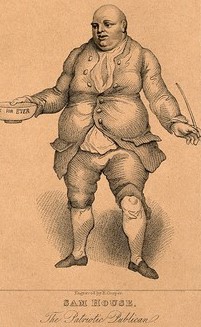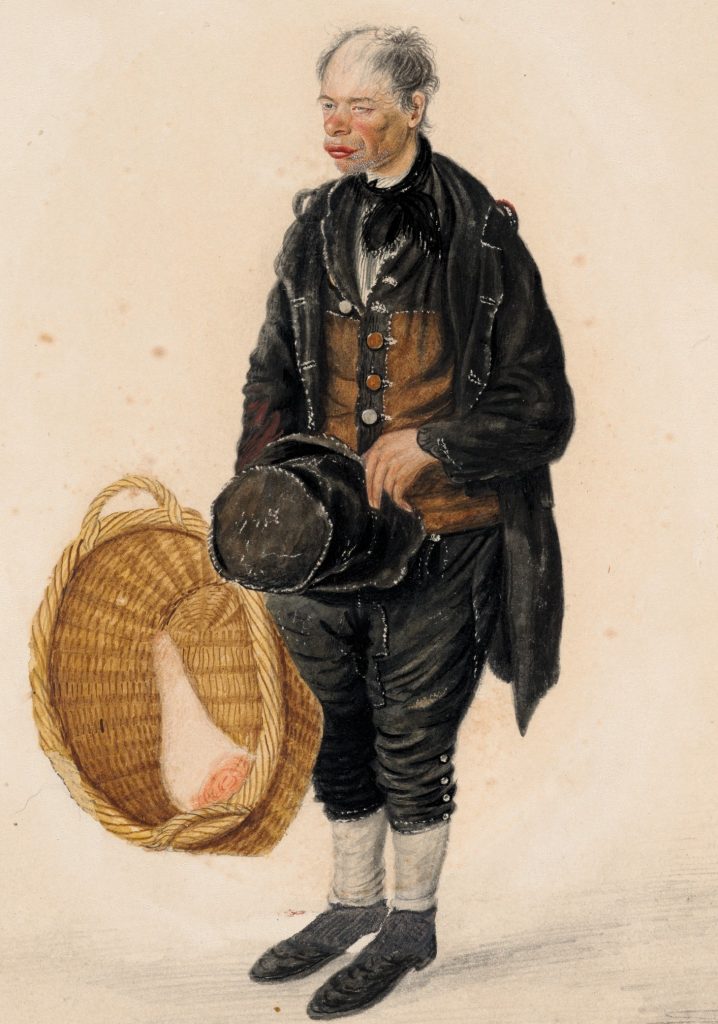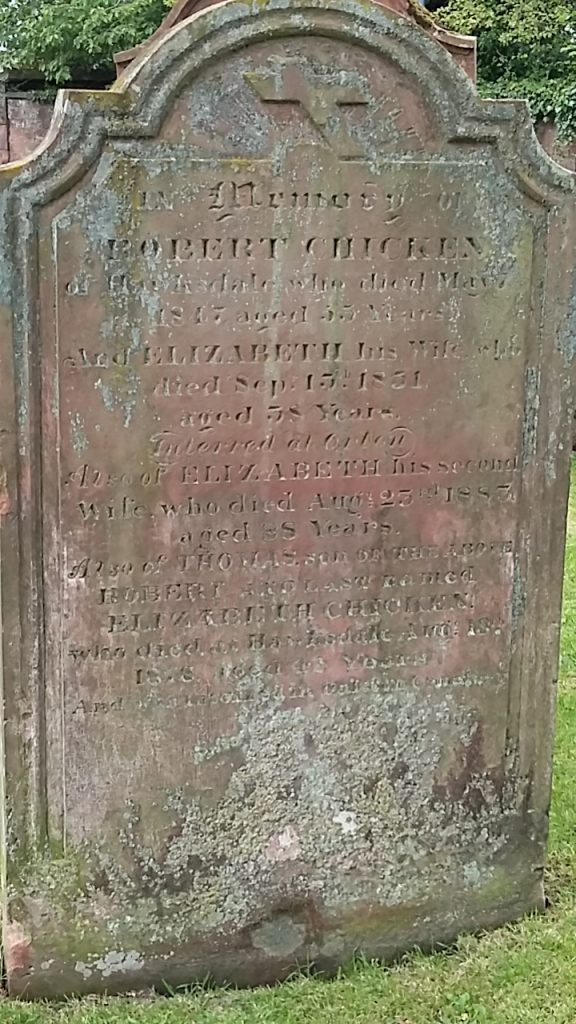As a small child one of my favourite card games was Happy Families. As soon as the Carlisle volunteer group found Robert Chicken among the overseers vouchers for Dalston, therefore, I knew I wanted to write about him. He was also the initial inspiration behind our own card game.
He was baptised in 1794 in Kirkbampton, the son of John and Mary Chicken (nee Skelton). In July 1823 he married Elizabeth Chambers at Great Orton, and the couple went on to have three children: John, Robert, and Dinah. He married a second time to Elizabeth Rayson in 1833 and had another son Thomas. Indicating their level of prosperity, the family kept one male servant/apprentice and a female servant in 1841.
Chicken was a victualler and publican in Dalston parish. By 1829 he was running the Waggon and Horses inn at Hawkesdale at Bridge End. At some point the establishment was renamed the Bridge End Inn, and under this name has survived into the twenty-first century. In the nineteenth century Hawkesdale was a small but arguably elite township, the latter claim confirmed by the residence of the Right Reverend Bishop of Carlisle at Rose Castle, Hawkesdale.

Chicken supplied the parish of Dalston with meat (beef, mutton, and offal rather than poultry) and other consumables in the period 1834-37, including one and a half gallons of ale for a funeral. The meat came from his shop in the Shambles, Carlisle, rather than directly from the inn. Chicken has been illustrated in the Top Trumps game of this project using an image of a butcher’s shop, but it seems likely that butchery was not the foremost part of the family business. They identified in censuses and directories with the innkeeping part of the concern and we only know about the early history of the butcher’s shop because it is cited in an overseer’s voucher. The property in the Shambles was given up by the Chicken family in late 1846, towards the end of Robert’s life.

Robert died at the relatively young age of 53. His second wife Elizabeth outlived him by over thirty years and died in 1883. She remained in the parish of Dalston and at first continued the tavern business: she employed her step-daughter Dinah as a barmaid in 1861. By 1871 and at the age of approximately 75 she was still living in Hawkesdale but had given up the inn to another female proprietor, Sarah Rayson, who was presumably her younger sister or niece. Elizabeth lived in Green Lane with her son Thomas, a brewer’s traveller, ensuring that two of Robert’s children had some occupational connection to their father’s main trade. The mother and son were immediate neighbours to an elderly mother-and-daughter couple who lived on parish poor relief, but this was not to be the fate of the widowed Mrs Chicken. Elizabeth herself became an annuitant, meaning she bought into a fund for her support in old age, and lived only with a female servant by 1881.

After Robert’s death in 1847, one Joseph Chicken can be found as an innkeeper in Dalston. In all likelihood he was Robert’s younger brother, who also acted as one of Robert’s two executors. Joseph kept the ‘Indian King’, combining it with work as ‘station keeper’.
Sources: Carlisle Patriot 4 December 1846 and 24 December 1847; White, Cumberland and Westmorland Directory (1829); Mannix, Cumberland Directory (1847); SPC 44/2/47/10 Dalston overseer’s voucher paid to Robert Chicken 1837; census for Dalston 1841-81.